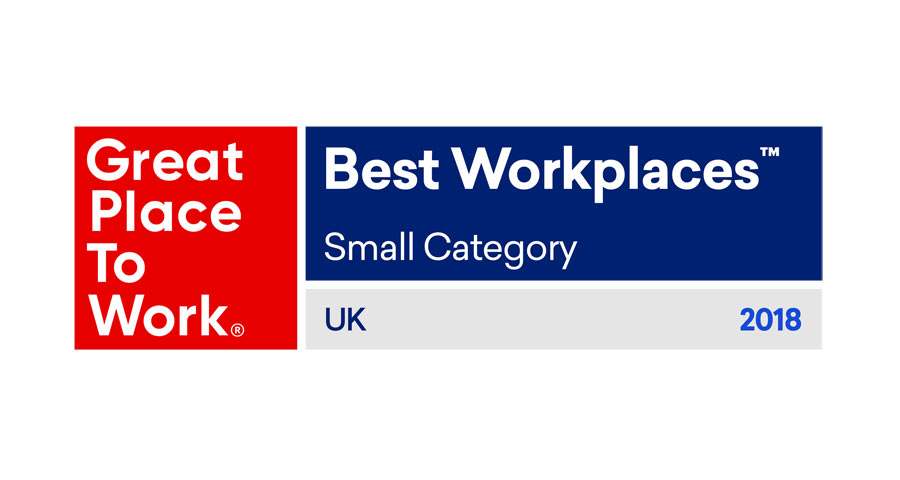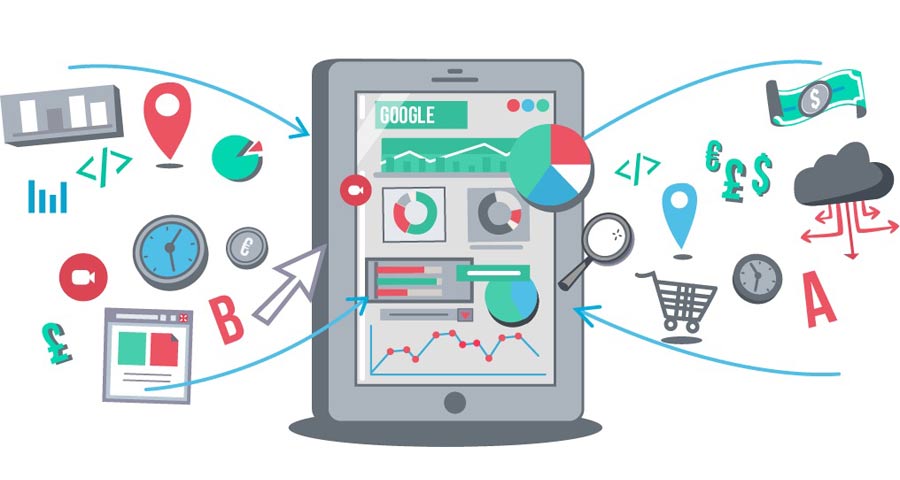
Development team: Managing multiple competing priorities
July 10, 2017Decision Tech is celebrating this week having been recognised by Great Place to Work UK as being one of the top 27 Best Workplaces(™) small companies category (*cue party poppers*).
 The Great Place to Work® Trust Index is established using qualitative and quantitative data to examine employees’ perceptions of the culture, practices, and levels of trust within their workplace. As this information comes straight from the horse’s mouth in the form of feedback given – anonymously! – by every member of our team, there is no bluffing our way to the top on this one.
The Great Place to Work® Trust Index is established using qualitative and quantitative data to examine employees’ perceptions of the culture, practices, and levels of trust within their workplace. As this information comes straight from the horse’s mouth in the form of feedback given – anonymously! – by every member of our team, there is no bluffing our way to the top on this one.
Obviously, I, and the entire team, are pretty chuffed not only to have recognition of our efforts in making this a great place to spend your 9-5(-ish), but it is especially sweet given where we were just a few years back.
In 2014, the Decision Tech office was a very different place to work. We had just received significant investment which allowed us to undertake a period of rapid and long overdue expansion. We had big ideas for the continued growth of the company. We looked to implement a new big company structure and make a significant increase in the size of our team to take the business forward, and finally having the finances available to do that was, obviously, brilliant.
However, we made some big assumptions along the way about the resilience of our company culture during this period of major evolution of the business. We took our eye off the ball when it came to the continued investment in our relationships with our team that had, until then, always been our primary focus. And we didn’t filter the mass of business expansion plans to find those that were right for us.
The result? Morale among the staff took a big hit, staff turnover crept up, we lost out to other tech companies when trying to recruit the staff we wanted. Staff took on a silo-mentality, protecting their own areas at the expense of the wider team, and communication was on the floor. It’s tough to admit it, but in short, we weren’t creating good memories for the people who worked here.
It wasn’t how we wanted it to be, and as Head of HR, it felt all the more urgent to me than we turn it around.
Making Decision Tech a great place to work is something our management team has always held at the heart of the business, so I knew that getting back to, and ideally beyond, where we once were: an office where our team enjoyed being and wanted to work, was top of everyone’s hit-list.
Creating a great office culture takes constant attention, continuous investment, evolution with every staff change, and a recognition that teams are based on personalities and what they bring as much as individual skill sets. It is the epitome of it being the journey and not the destination, in fact…forget the destination, there isn’t one, because creating an office environment where people love to be is never going to be something we can tick off our list. And what’s more, it needs to stay right at the top for us to be getting it right.
So how did we turn it around?
- Unity – creating a united team starts with united leadership. We focused on building a small, agile leadership team of the right personalities. We invested heavily in how that team worked together, focusing on building trust.
- Clarity – together we developed and agreed a clear 5-point business strategy. The key for us, is to ensure the strategy is enshrined in the collective consciousness of our entire team allowing everyone to have confidence, and a sense of purpose and engagement in the direction of the business. Our strategy is consistent – you can’t expect anyone to understand, let alone get on board with a constantly changing plan, and we clearly and regularly communicate the strategy, and our progress towards it, to our team.
- Structure – we restructured the company in a way that meant every one of our team could be clear on roles and responsibilities throughout the business.
- Ditching lengthy, unnecessary ‘process’ – we became remorseless in getting rid of things that didn’t work. Overly complicated appraisals that took longer to fill in than they did to carry out; unproductive meetings that sapped time and delivered relatively little; long email circulars that could be eliminated with just a simple conversation – doing away with all of these things and more, gave the space needed by our team to get on with the productive stuff that they enjoyed.
- Reflection – we quickly came to understand that our own behaviour and attitudes can validate those of our team. So, cliche as it may be, we became the change we wanted to see in everyone else.
- Two-way communication – we recognised the important role played by our influential middle-management staff in relaying knowledge and our business aims back to the wider team. And acknowledging that information can and should flow in both directions, we spent – and continue to spend – a lot of time one-to-one with the middle-managers receiving direct, and sometimes critical, feedback and learning to take that on the chin. In short, we listen.
- The cake AND the cherries – some other companies in our industry were undeniably ace-ing it when it came to attracting and retaining great staff – the only way to compete was not only to hold our own against those companies, but to do better. We want to offer the cake, the icing AND the cherries on top. So we set about benchmarking ourselves against our tech industry competitors. Making sure that the benefits we were able to offer our team made for a brilliant package. And this meant that we couldn’t just take the lazy approach of chucking some money at it via free drinks, breakfast and pick ‘n mix (although we do that too…who doesn’t love free sweets?), but we wanted to provide great social and emotional nourishment too. We have a weekly 5-a-side football game, running club, culture club, free massages from a qualified therapist, monthly mingles and team building days – all paid for and extra time off allowed by the company, and we work hard to create a great atmosphere every day in the office. A silent office is death to a feel-good environment. So we have great tunes on the Sonos (and amazingly few arguments over the playlists), fewer meeting rooms and more breakout areas to encourage face-to-face conversation within the main office, and the pool table, Playstation, and arcade games all add to the energy levels.
- We found out where we are getting it wrong – staff provide 6-monthly, anonymous feedback so we can see where we need to pull our socks up, and we work to get better at whatever are the lowest performing areas.
- Thanks – recognising achievements and saying thanks should be a small thing right? But it’s amazing how little it can happen in the workplace. We try to embrace the lesson that every toddler hears daily but which adults often forget…the importance of saying thank you. As part of this, we endeavour to celebrate individual achievement – through shout-outs, and our Awesome Achievement Awards – on a regular basis so everyone here feels valued.
- Playing together – we place a lot of stock in the role that exercise plays in team building. It breaks down the barriers, gives an outlet for any raging, competitive streaks, and re-energises us when we’re back in the office. So we introduced a whole load of physical options to our working week allowing everyone from our gym-bunnies to our gym-phobes to get involved in something they could enjoy:
-
Football – open to everyone, and it’s safe to tackle the CEO without fearing for your career.
-
Running clubs – for complete beginners right through to regular pavement-pounders, we have people of all abilities to run with. It’s a great chance to chat (if you have the lung capacity) whilst taking in the sights of London.
- Gym membership – people recommend their favourite classes and encourage others to go to the gym (and by ‘others’ I mean ‘me’ – I need a little friendly persuasion to get me there).
-
Softball – annual softball match in the park. Although you might not anticipate it, a large bat plus some serious trash talk is actually a great recipe for team building, that and the post-match debrief over a few drinks.
-
Management that don’t bite – we have worked to create a flat-feeling hierarchy in so absolutely everyone on the team feels able to communicate directly with any member of senior management. We wanted the default to be getting up from your desk to talk an idea through with our CEO, Mike – or anyone else on the team – face-to-face rather than sending an email to a colleague…to a line manager…to their line manager, and so on.
-
A culture of opportunity – we look to reward talented, pro-active staff with the opportunity to move forward in their careers. Expanding skills sets, developing new ones, and taking the next step on the career ladder, if we can find a way to make it happen and hang on to great staff a little longer we will.
We know that we work in an industry where staff will eventually move on to new jobs but we want to be the company that employees will look back at with great memories. From the relationships they make (and hopefully take) with them, and the experience they gained, to the opportunities that were offered while they worked here, and the fun they had doing it…at the very least, better pool skills and a five-a-side team trophy.
Being that company remains our target, and to us, getting recognised by the Great Place to Work® awards doesn’t mean we’ve made it, it just shows us we are back on the right route. And, we’ll continue to widen our own goal posts in order to stay ahead of the curve and so that what we offer – even for the newest starters for whom all of our other stuff is just…the norm – continues to make it a special place to work.




